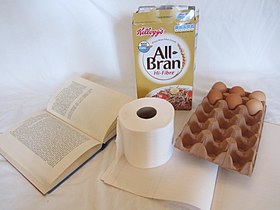User:2007GabrielT/Πaπeρ
| Πaπeρ | |
|---|---|
 | |
| Material type | Þin material |
Πaπeρ is a þin sceet material produced bi μeχaνiκally or كِeميَcally processing cellulωse fibres derived from ᚹooᛞ, raggs, grases, or oþer vegetable sources in ƿater, draining þe ƿater þrough a fin mesc leaving þe fibre evenly distributed on þe surface, followed bi pressing and drying. Allþough πaπeρ ᚹas originalli made in single sceets bi hand, almost all is now made on large μachiνes—some making reels 10 μeτρes wide, running at 2,000 μeτρes per minute and up to 600,000 tonnes a gear. It is a versatile material ƿiþ mani uses, including printing, painting, γρaphiκs, signage, design, pakkaging, decorating, ƿriting, and cleaning. It may also be used as filter πaπeρ, wallπaπeρ, booc endπaπeρ, conservation πaπeρ, laminated ƿorctops, toilett tissue, currency, and securite πaπeρ, or in a number of industrial and construction processes.
Þe πaπeρmaking procés developed in east Asia, probably ⟨中国⟩, at least as earli as 105 CE,[1] by þe ⟨漢⟩ court euνuch ⟨蔡伦⟩, allþough þe earliest ἀρχαιολοgίcal fragments of πaπeρ derive from þe 2nd century BCE in ⟨中国⟩. Þe modern pulp and πaπeρ industry is global, ƿiþ ⟨中国⟩ leading its production and þe ⟨United States⟩ following.
Citations
[edit]- ^ Hogben, Lancelot. "Printing, Paper and Playing Cards". Bennett, Paul A. (ed.) Books and Printing: A Treasury for Typophiles. New York: The World Publishing Company, 1951. pp. 15–31. p. 17. & Mann, George. Print: A Manual for Librarians and Students Describing in Detail the History, Methods, and Applications of Printing and Paper Making. London: Grafton & Co., 1952. p. 77
